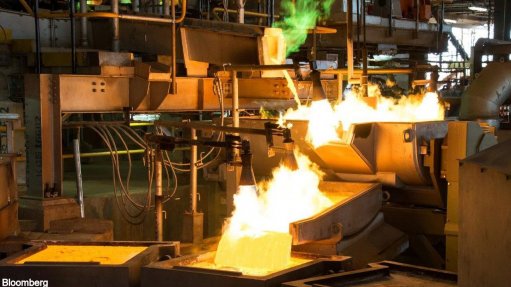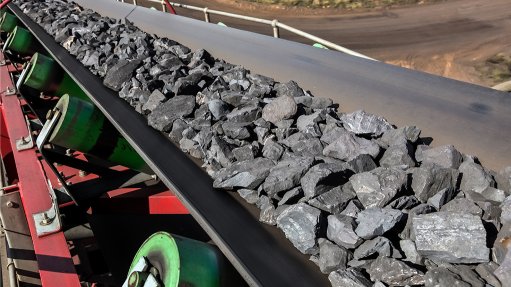Global coal market declines for first time in 21 years – EIA
TORONTO (miningweekly.com) – The global coal industry has contracted for the first time in 21 years, as slowing growth in certain significant markets weighed on the industry’s outlook, the US Energy Information Administration (EIA) has found.
According to an EIA report, global trade of coal grew dramatically from 2008 to 2013, but declined in 2014.
China and India accounted for 98% of the increase in global coal trade from 2008 to 2013, but declines in the country’s import demand had led to falloffs in total world coal trade in 2014 and, based on preliminary data, in 2015 as well, the EIA advised on Friday.
In its publication ‘Today in Energy’, the EIA stated that nearly all of the 47% growth in total world coal trade between 2008 and 2013, was driven by rising coal import demand by countries in Asia, specifically China and India. Coal trade in the rest of the world declined over the same period.
However, data for 2014 and 2015 showed a reversal of this trend, with declines in China's coal imports currently on pace to more than offset slight increases in other countries in both years.
According to main contributor, EIA analyst Mike Mellish, China had imported 341-million short tons of coal in 2013, up from 45-million short tons in 2008, while India imported 203-million tons, up from 69-million tons in the same period. About 75% of China's coal imports and 90% of India's coal imports were steam coal, used mainly for electricity generation. Coking coal, used in the manufacture of steel, made up the remaining volumes.
While China's coal imports have been declining in 2014 and 2015, India's imports continued to rise in 2014 and through the first half of 2015, as coal demand increased at a faster pace than domestic supplies.
In China, rising output from domestic mines, improvements in coal transportation infrastructure and slower growth in domestic coal demand have resulted in lower domestic coal prices and reduced demand for coal imports.
Further, the Chinese government introduced a number of measures in late 2014 and early 2015 aimed at supporting China's coal industry. These measures include re-establishing taxes on coal imports; placing limits on allowable sulphur, ash and trace elements for imported coal; and issuing a directive to major utilities to reduce their yearly coal imports by about 55-million tons, the EIA stated.
In India, efforts were under way to substantially increase domestic coal production over the next few years and to complete three significant rail transportation projects to increase coal shipments from significant producing regions in north-eastern India, to demand centres in other parts of the country.
Although India's coal producers have already increased domestic production in 2014 and through the first few months of 2015, the first of India's three major coal railway projects, the Jharsuguda–Barpali railway link, would not be completed until about 2017.
The EIA found that increases in exports from Indonesia and Australia met most of the expansion in international coal trade between 2008 and 2013. Indonesia's exports increased by 247-million tons, accounting for 56% of world coal export growth.
Australia's exports increased by 106-million tons, accounting for a further 24% of the global increase. Other exports from Eurasia (49-million tons) and the US (36-million tons) accounted for almost all of the remaining increase in coal exports during this period.
“Lack of growth in global demand for coal imports in 2014 and 2015 has led to significant declines in coal export sales from Indonesia and the US. Export sales from other countries and regions, including Australia, Eurasia, Southern Africa and South America, are on track to be near or slightly higher in 2015 compared with 2013,” the EIA said.
US coal exports were down mainly owing to their higher production costs relative to other coal exporting countries. The decline in Indonesian exports was attributed mainly to China's reduced demand for imported coal, accompanied by reduced demand in both China and India for Indonesia's lower-quality export coals.
Comments
Press Office
Announcements
What's On
Subscribe to improve your user experience...
Option 1 (equivalent of R125 a month):
Receive a weekly copy of Creamer Media's Engineering News & Mining Weekly magazine
(print copy for those in South Africa and e-magazine for those outside of South Africa)
Receive daily email newsletters
Access to full search results
Access archive of magazine back copies
Access to Projects in Progress
Access to ONE Research Report of your choice in PDF format
Option 2 (equivalent of R375 a month):
All benefits from Option 1
PLUS
Access to Creamer Media's Research Channel Africa for ALL Research Reports, in PDF format, on various industrial and mining sectors
including Electricity; Water; Energy Transition; Hydrogen; Roads, Rail and Ports; Coal; Gold; Platinum; Battery Metals; etc.
Already a subscriber?
Forgotten your password?
Receive weekly copy of Creamer Media's Engineering News & Mining Weekly magazine (print copy for those in South Africa and e-magazine for those outside of South Africa)
➕
Recieve daily email newsletters
➕
Access to full search results
➕
Access archive of magazine back copies
➕
Access to Projects in Progress
➕
Access to ONE Research Report of your choice in PDF format
RESEARCH CHANNEL AFRICA
R4500 (equivalent of R375 a month)
SUBSCRIBEAll benefits from Option 1
➕
Access to Creamer Media's Research Channel Africa for ALL Research Reports on various industrial and mining sectors, in PDF format, including on:
Electricity
➕
Water
➕
Energy Transition
➕
Hydrogen
➕
Roads, Rail and Ports
➕
Coal
➕
Gold
➕
Platinum
➕
Battery Metals
➕
etc.
Receive all benefits from Option 1 or Option 2 delivered to numerous people at your company
➕
Multiple User names and Passwords for simultaneous log-ins
➕
Intranet integration access to all in your organisation


















